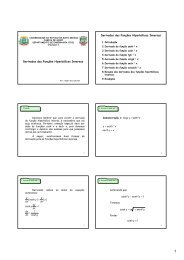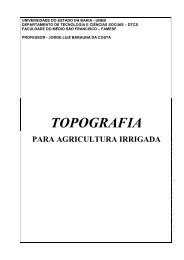Anuário Brasileiro do Arroz 2011 - Unemat
Anuário Brasileiro do Arroz 2011 - Unemat
Anuário Brasileiro do Arroz 2011 - Unemat
Create successful ePaper yourself
Turn your PDF publications into a flip-book with our unique Google optimized e-Paper software.
STRONG CURRENCY Along with<br />
the question of supply, the exchange<br />
rate policy affects the sales. The high<br />
value of the Brazilian currency against<br />
the <strong>do</strong>llar knocked <strong>do</strong>wn the prices in<br />
the <strong>do</strong>mestic market by making shipments<br />
abroad difficult, while facilitating<br />
purchases up to February <strong>2011</strong>.<br />
In the meantime, prices in the international<br />
market continued receding,<br />
although somewhat moderately, after<br />
peaking in 2008, smack in the middle<br />
of the “food crisis” announced by the<br />
Food and Agriculture Organization of<br />
the United Nations (FAO).“In March<br />
and April, when upwards of 70% of the<br />
rice was harvested in the Country, the<br />
pressure exerted by the harvest affected<br />
the market more severely than the<br />
question of the exchange rate, since<br />
the prices practiced in Rio Grande <strong>do</strong><br />
Sul were varying from R$ 18 to R$ 19,<br />
the parity with the Uruguayan product,<br />
for example, would be R$ 21 to R$ 22<br />
per sack”, explains Élcio Bento, rice<br />
market analyst with Safras & Merca<strong>do</strong>.<br />
The difference between the import parity<br />
and internal prices was equivalent to<br />
something between R$ 2 and R$ 4, or<br />
US$ 1.25 to US$ 2.50 per 50-kg sack.<br />
If, for one thing, there is no “price<br />
floor” for the <strong>do</strong>mestic scenario, on account<br />
of plentiful supply, on the other<br />
hand, the “price ceiling” is very low,<br />
which is the parity of the price of imports.<br />
This information really causes<br />
concern, since the movement of the<br />
quotes towards the minimum price of<br />
R$ 25.80, charged by the producers,<br />
will represent a soaring trend for imports<br />
from Mercosur. “Currently, these<br />
countries have been strongly in search<br />
of third markets, as they are not interested<br />
in promoting even smaller quotes<br />
in Brazil. But with <strong>do</strong>mestic prices at<br />
R$ 25.80, that is to say, above US$<br />
16, Brazil remunerates better than any<br />
other world market, capturing the at-<br />
tention not only of Mercusur countries,<br />
but of other huge suppliers”, explains<br />
Barreto.<br />
The analyst blames the pressure of<br />
the harvest on the receding prices in<br />
the <strong>do</strong>mestic market. “At this moment,<br />
there are not enough warehouses, transport<br />
costs are high, sales are not running<br />
smoothly and there are excessive<br />
supplies. It is a receding scenario and<br />
the natural fallout translates into depressed<br />
prices”, he ponders. Besides the<br />
record crop in Brazil, all Mercosur countries<br />
are also expecting bumper crops or<br />
new record figures, which will obviously<br />
generate surpluses in excess of 3 million<br />
tons in the economic bloc, something<br />
like 10% of the entire global market.<br />
“This leads to a trend, if the present scenario<br />
holds, of average prices not higher<br />
than R$ 22 over the coming months. A<br />
scenario that will only change if radical<br />
support moves come from the federal<br />
government”, he projects.<br />
OFFER AND<br />
EXCHANGE RATE<br />
EXERT PRESSURE<br />
OVER DOMESTIC<br />
PRICES<br />
33


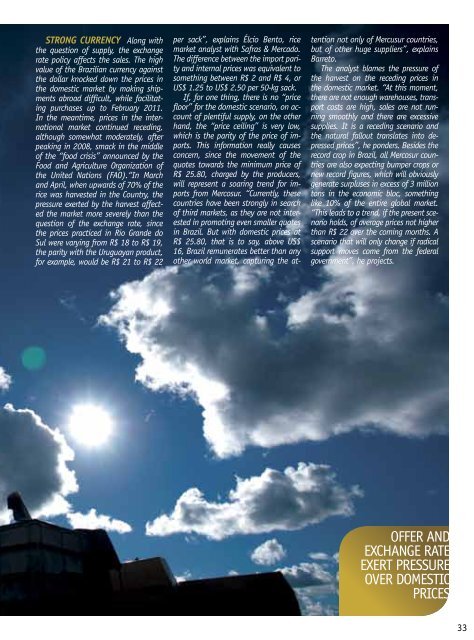
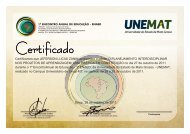
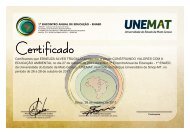
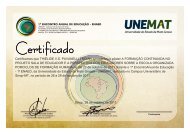
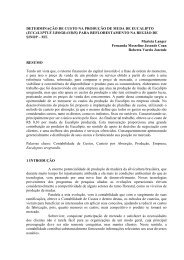
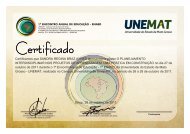
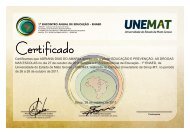
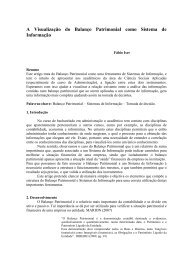
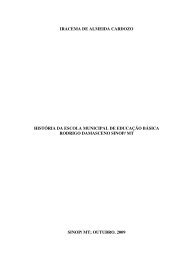

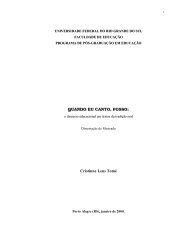
![Aula 31 - Funções Hiperbólicas [Modo de Compatibilidade] - Unemat](https://img.yumpu.com/14334654/1/184x260/aula-31-funcoes-hiperbolicas-modo-de-compatibilidade-unemat.jpg?quality=85)
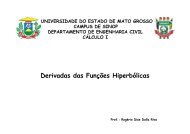
![Aula 31 - Funções Hiperbólicas [Modo de Compatibilidade] - Unemat](https://img.yumpu.com/14332146/1/190x135/aula-31-funcoes-hiperbolicas-modo-de-compatibilidade-unemat.jpg?quality=85)
